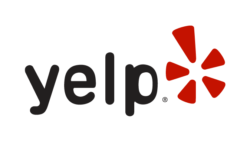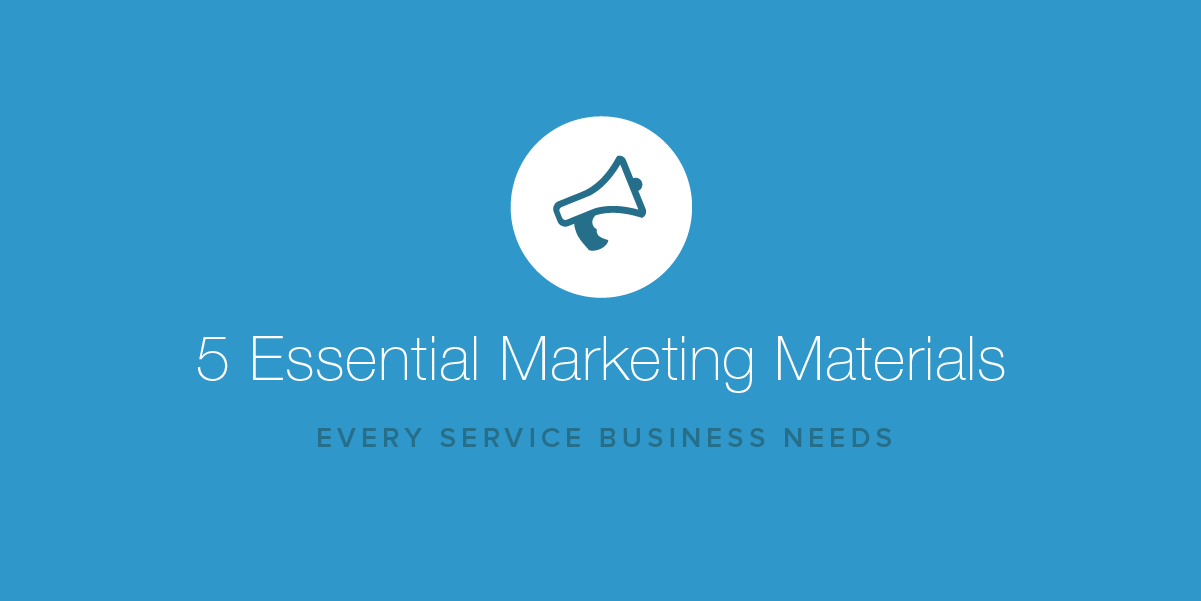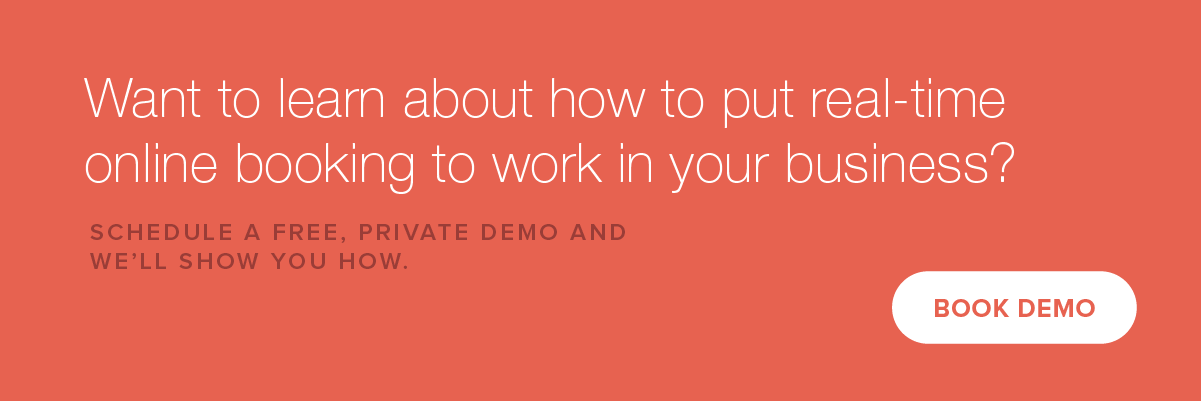5 Essential Marketing Materials Every Service Business Needs
- October 29, 2017
- By: Vonigo
You need more than just business cards and a website to succeed
What’s the first thing people get for their new business (after a good name)? Business cards. There is something about getting business cards that makes a business real. Next thing? A website. It used to be an ad in the yellow pages, but today that’s less important than other pieces of marketing material. What marketing materials do you need besides business cards and a website?
Here are 5 more essential marketing materials you need for your service business.
Stake your claim online: Create your Google Business and Yelp Profiles
When was the last time you didn’t search Google when you needed something? Five years ago? Ten? When people are looking for a service company, most people search for “good electricians in my area.”
And Google happily provides the results.
But, have you noticed that a lot of the search results include star ratings and information about the business? Ever notice how when you search on Google Maps that same business info comes up there too?
That’s Google My Business at work. Like all things Google it’s easy to use and claim your business on Google. Google wants and needs you to tell them about your business. It’s a win-win for both of you. Google gets better search results and you get found on Google by your customers.
 Google My Business is step one. Step two is setting up your Yelp profile. Just like Google, claiming your business on Yelp is free and easy. Yelp isn’t just for finding the best take out at last minute, all kinds of businesses use Yelp. Many people pick a business based on their Yelp ratings. If you haven’t claimed your business on Yelp you can’t respond or track reviews.
Google My Business is step one. Step two is setting up your Yelp profile. Just like Google, claiming your business on Yelp is free and easy. Yelp isn’t just for finding the best take out at last minute, all kinds of businesses use Yelp. Many people pick a business based on their Yelp ratings. If you haven’t claimed your business on Yelp you can’t respond or track reviews.
Once you’re registered on Yelp, it’s easier for customers find you both on Google and through the Yelp app. Yelp results show up within Google search results with star ratings. Giving you that extra boost with potential customers. Even if you don’t claim your business, customers can still leave star ratings and comments about you. Claiming your business lets you respond to comments and get first-hand insight into what your customers like—and don’t—about you.
Tip: One of the hardest parts about claiming your business is writing the description and gathering photos of your company. Work on your business bio and gather pictures before you start. Your business bio should be between 100-300 words and tell people:
- who you are
- what you do
- what you’re great at
- what areas you serve
- how to get in touch with you
Here’s an example of a short version for Vonigo:
Vonigo is a business management platform that helps streamline operations and increase sales of mobile service companies. Vonigo offers a unified suite of configurable cloud-based modules including; CRM, scheduling, online booking, work order management, estimating, dispatch, routing, GPS, invoicing, payments, reporting, and more — all accessible over the internet from any desktop or mobile device. Millions of jobs have been successfully booked and managed with Vonigo.
That’s 66 words but still gives you a good idea what we’re about. Your business bio is what you’d say to someone if they ask you “So, what do you do?”

One page flyer: Something to hand out or leave behind with customers
Print isn’t entirely dead. One page flyers give you something to hand someone when they ask about your services. It’s something you can staple a business card to and keep with you when you’re on a job. How many times have you seen someone working in your neighborhood in your neighborhood and thought “Hey I need that too, I’m going to ask for their information…”? And how often do you get a business card that you have to scribble on?
Now imagine if the person said, “Sure, here’s my card and some information about what services we offer”, how much better is that? If someone was thinking, “I just need my gutters cleaned,” but learned you do yard work and hauling too, then you have that extra business in hand.
That’s getting more than the first piece of business, but the next piece too.
Thank you cards: Thank customers and give them a way to share with friends
Writing a thank you card is a lost art. Our mothers made us write them, but today thank you notes are another way to connect with your customers and get referrals. You don’t have to go overboard; a simple card with “Thank you” does the trick. Write a short note in each one and include your business card. Now your customer has an extra business card to give to a friend and a nice reminder about the work you did. Want to step it up a notch, put in a coffee card, a coupon for the next time they need you, or a referral bonus.
A thank you card is a personal touch that means exactly what it is: Thank you for your business, I appreciate it.
And who doesn’t like that?
Tip: We all know you go to a printer to have the cards printed, but did you know you can outsource writing the notes too! There are companies who will take care of everything for you saving you time, but still giving customers an unexpected personal touch from your business.
Your first ad: Getting started with Google Ads isn’t hard or expensive
With these first four pieces of marketing material, now you can think about doing a little online advertising. Since most people start with Google to search for businesses, it makes good sense to start advertising there.
Google Ads are an easy and inexpensive way to promote your business online. The Google’s Ads tool walks you through picking the keywords for your business, deciding who will see your ads (right down to the city or neighborhood), and creating your ad.
Start with simple, text-based search ads to test the waters. Set a small budget and run the ads for a month or two. Google Ads tools will show you how many people have seen (impressions) and clicked on your ad. If you’re using Google Analytics to measure your website traffic you can get even more insight into how well your ads are working.
Google Ads are a proven way to get more people to your website and bring in new business. Now with all the other marketing material essentials in place, it’s much easier to start using Google Ads. You have plenty of practice, writing a killer description about your business. Just the ticket for an ad that gets clicks.
Tips: Is your website ready for those clicks? I don’t mean can it handle extra traffic, but will your website turn a browser into a buyer? If you’re like most companies the answer is a flat out no. Most websites, especially the homepage, are cluttered with everything you want to say about your business. Everything. And that everything gets in the way of people doing business with you.
Here’s the solution: build a landing page. A landing page is a special page on your website that is designed to get people to start working with you. These examples from Unbounce illustrate exactly what I mean.
A landing page doesn’t give your whole story. It’s focused and it should tie directly in with your ad. If your ad is “Telsa Electric, we know home automation” then your landing page only talks about how you are experts in home automation. The landing page starts with the copy but ends with the most crucial part of a landing page: the call to action (CTA).
Your CTA needs to be concise and compelling. “Get a quote” is okay, but “Get your free home automation consultation” is better. “Email us” is meh, “We’re ready to help” builds a connection.
Using a landing page for your ad gives your ad an extra boost and is more likely to turn that person into a customer.
Remember: keep it simple. Keep it on point. This isn’t your whole pitch, this is what you say when you have 5 minutes or less to tell someone why you’re the right choice.
Step up your game with online booking and dispatch
Here’s a final tip that will tie all the other marketing materials together: accepting online bookings. More and more people today would rather use anything other than the phone to talk with a business. Did you know the phone app on their smartphone is the fifth most popular communications app for Millennials? Fifth.
If you make people call you to book an appointment, many people will find another business that lets them book online. Picking up the phone and calling someone to book an appointment interferes with already busy days. When you can just put in your name, number, pick a time that’s convenient, and be done with a simple online form; that’s going to be the easy choice for a lot of your customers.
Book a demo to try Vonigo and see how easy online booking can be.
Did we miss something?
Did we miss something with these essential marketing materials? What would you add or take away? There are lots of ways to do business and we’d love to hear from your experiences.




